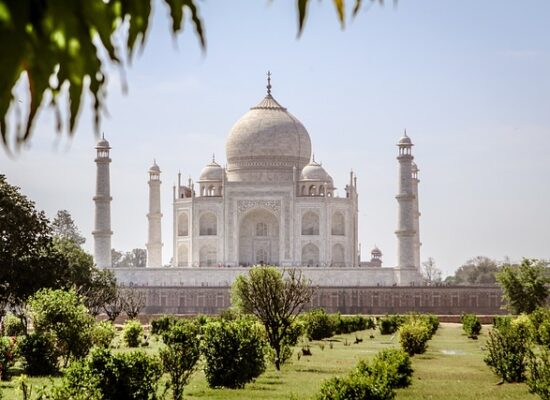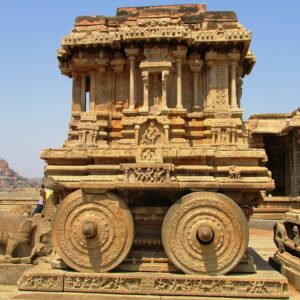Golden Triangle Tour Package
Duration – 05 Nights 06 Days
Overview
Explore India’s Rich Heritage with the Golden Triangle Tour Package
The Golden Triangle Tour is a remarkable journey through India’s rich history, culture, and architectural wonders. This iconic circuit connects three of India’s most vibrant cities: Delhi, Agra, and Jaipur, forming a triangle on the map.
Delhi, the bustling capital, is a blend of ancient history and modernity. Explore historic sites like the Red Fort, Jama Masjid, and Humayun’s Tomb. Experience the chaotic charm of Old Delhi’s narrow streets and savor local street food. In contrast, New Delhi showcases the grandeur of British colonial architecture, with landmarks like India Gate and Rashtrapati Bhavan.
Agra is home to the world-famous Taj Mahal, a UNESCO World Heritage site and one of the most exquisite monuments to love ever built. The Agra Fort and Fatehpur Sikri add to the historical grandeur of this city.
Jaipur, the Pink City, is known for its palaces, forts, and vibrant culture. Visit the magnificent Amer Fort, Hawa Mahal, and City Palace. Don’t forget to explore the local markets for handicrafts and jewelry.
This tour offers a glimpse into India’s royal and cultural heritage. From the bustling streets of Delhi to the romance of the Taj Mahal and the regal aura of Jaipur, the Golden Triangle Tour is a captivating journey that showcases the essence of India’s diversity and history. It’s a must for travelers looking to experience India’s past and present in one incredible adventure.

Tour Itinerary
Day 1 : Arrive Delhi
Meeting and assistance on arrival at Indira Gandhi International airport. You would be transferred to a hotel in a private vehicle. The day is kept free to recover from jetlag.
Overnight in Delhi
With old monuments and busy neighborhoods subtly merging with a vibrant and contemporary cosmopolitan world, Delhi, the capital of India, is a fascinating tourist destination. Poised along the banks of River Yamuna, Delhi, which is almost 1,000 years old, offers a mesmeric mosaic of experiences, both heritage and contemporary. While the former honor the elegant aging of centuries-old Delhi, the latter reiterate that the capital is the heart of Indian democracy, and can keep pace with the most advanced of the metropolitans of the world.
Day 2 : In Delhi
After breakfast, explore some major highlights of the city. You would be visiting Qutub Minar. Almost as old as the history of the Delhi Sultanate, the iconic Qutub Minar, the world’s tallest brick minaret, dominates the skyline of the city. Standing 73 feet tall, this five-storeyed tower, a UNESCO World Heritage Site, remains one of the most magnificent buildings of India from the medieval era. The first three storeys of the tower are built in red sandstone while the fourth and fifth are made of marble and sandstone. All the five floors are adorned with projecting balconies.
Later drive past from the secretariat area, India Gate and Presidential House. The day will be concluded with a visit to Chandni Chowk also known as Old Delhi. You would be visiting Jama Masjid. One of the largest mosques in India, Jama Masjid is situated in Old Delhi. Its construction was started in 1644 and completed by Mughal emperor Shah Jahan. Made of red sandstone and marble, this gorgeous mosque is also called Masjid-I-Jahanuma, meaning the mosque commanding the view of the world.The courtyard is so huge that it can easily accommodate 25,000 devotees at one time.
Experience a rickshaw ride in the alleys of Chandni chowk.After your visits, return to the hotel.
Overnight in Delhi
Day 3 : Drive from Delhi to Jaipur
After breakfast, check out from the hotel and drive to Jaipur (280 kms/ 6 hrs approx.).
On arrival, visit Amer Fort. Just 11 km outside Jaipur, lies the magnificent Amber Fort (Amer Fort), sitting atop a hill, and rising like a sentinel guarding the city. Commissioned in 1592 by Maharaja Man Singh I, the fort is a fine blend of Rajput and Mughal architectural styles, and boasts a grand palace, temples and several ornate gates. Built entirely of red sandstone with white marble work, the UNESCO World Heritage Site is a picture of opulence and grandeur, set against a stark desert backdrop and rolling hills.
After your visits, check in at the hotel.
Overnight in Jaipur
The city of palaces and forts, interspersed with historical monuments and gardens that testify the grandeur of the Rajput kings, Jaipur is the gateway to the royal heritage of India. Also called Pink City, the capital of Rajasthan, remains suspended in time, with its heritage preserved in the overwhelming Hawa Mahal that gazes down at the bustling streets of Johari Bazaar.
Day 4 : In Jaipur
Breakfast will be served at the hotel. The day is marked to explore the heritage and culture of this royal city. You would be visiting City Palace. Located in the heart of old Jaipur, the City Palace is a spectacular example of the amalgamation of Rajput and Mughal architecture. Commissioned to be built by the founder of Jaipur, Maharaja Jai Singh II, this lavish palace includes the living quarters of the erstwhile royal family, some of whom still reside in a private wing. Its galleries display the royal family’s personal belongings like garments featuring exquisite embroideries.
Later you would be visiting Jantar Mantar & Hawa Mahal (from outside). Jantar Mantar is considered as one of the oldest astronomical observatories in the world. A UNESCO World Heritage Site, Jantar Mantar houses the world’s largest stone sundial. There are 16 devices at Jantar Mantar, designated to measure time, observe planetary motion around the sun, and to keep a track of celestial bodies. It is the largest of the five astronomical observatories that Maharaja Sawai Jai Singh II had built.
The Hawa Mahal in Jaipur is considered as one of the most iconic attractions of the city. The five-storey building looks like a honeycomb of a beehive and it is always windy inside, owing to the numerous windows and jharokhas. This amazing ventilation that the palace enjoys is the reason why it was named as the Hawa Mahal, which literally translates into the “Palace of the Winds”.
The evening is kept free to stroll in the local markets.
Overnight in Jaipur
Day 5 : Jaipur-Agra
After breakfast, check out from the hotel and drive to Agra (250 Kms/5 hrs approx.). Take an enroute stop and visit Chand Baori stepwell. The Chand Baori is a stepwell built over a thousand years ago in the Abhaneri village of Rajasthan. It is one of the largest stepwells in the world and also one of the most beautiful ones. Located in the eastern part of the province of Rajasthan, it was built by King Chanda somewhere in the 9th century. The Chand Baori is not an easy landmark to find, thus it is one of the hidden secrets of India.
Continue to drive to Agra. On arrival, visit the Agra Fort. Built by Mughal emperor Akbar in 1565 AD, Agra Fort is a majestic sandstone built as an ode to the magnificence of the Mughal empire. Encompassing within its 2.5-km-long enclosure walls a stunning imperial city, the fortress is shaped like a crescent, its eastern wall flanked by River Yamuna. It is said that the construction of the fort was originally begun by emperor Akbar, but completed by his grandson Shah Jahan, who added most of the marble monuments here.
After your visits, check in at the hotel.
Overnight in Agra
Agra is an ancient city on the banks of the River Yamuna. It finds mention in the Mahabharata but gained importance as the capital of the Mughal Empire from 1556 – 1658. It is on the Golden Triangle tourist circuit with Delhi and Jaipur. It is famous for its Mughal architecture and for being home to one of the Seven Wonders of the World, the Taj Mahal – a monument of incredible elegance and architectural perfection. Agra has many other famous archeological sites and is famous for its marble inlay work and its leather industry that manufactures shoe uppers for some of the best shoe companies in the world.
Day 6 : Agra-Delhi depart
Wake up early in the morning and visit the Taj Mahal. Mughal emperor Shah Jahan, the creator of the Taj Mahal, said that the beauty of the monument made “the sun and the moon shed tears from their eyes”. It has also been described as a “teardrop on the cheek of eternity” by Nobel laureate Rabindranath Tagore. Every year, thousands of tourists from around the world make a beeline for this breathtakingly ethereal marble monument, considered by many as the most beautiful building constructed by man. The monument was built as a memorial by Mughal emperor Shah Jahan for his deceased wife, Mumtaz Mahal. It is one of the seven wonders of the world and is a monument of pride for not just Agra but also India.
Return to your hotel for breakfast. Rest of the time at leisure.
Check out from the hotel and drive to Indira Gandhi International Airport Delhi (240 kms/ 4.5 hrs approx.) airport to board your international flight.







